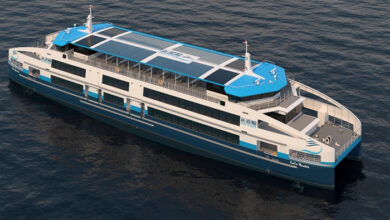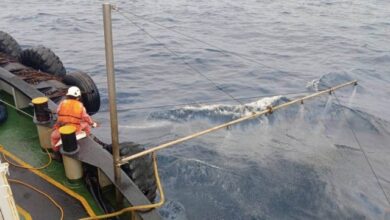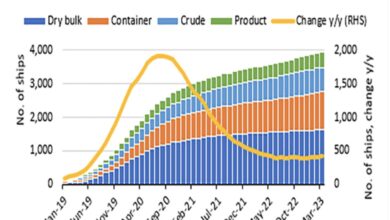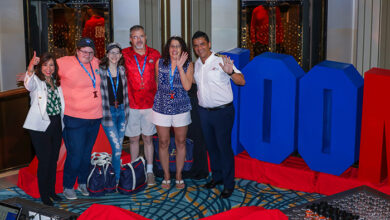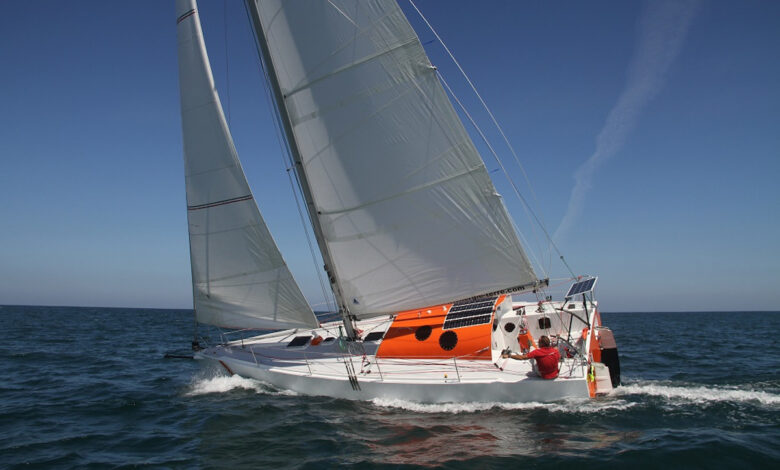
The unique format of the Global Solo Challenge opens to the opportunity of sailing around the world in an organized event on a wide range of boats, with the little limitation imposed by the rules.
Up until now, a single-handed race around the world, non-stop and without assistance, by the three great capes, was the preserve of few pro sailors who rose up the ranks with a lot of effort and in the offshore racing scene until they could secure enough sponsorship for a campaign on a racing boat admitted, typically, in the Vendée Globe, such as an Imoca Open 60. Few could succeed given the extremely high costs of campaigning these types of boats.
![]()
The format of the GSC successfully brings together pro sailors, or former pro sailors who have been around the offshore sailing scene for some time, but also opens the door for more Corinthian skippers. These skippers may too have a great deal of experience, but have never been professional racers and don’t have access to large budgets.
The different profiles of the skippers who take part in the Global Solo Challenge are exactly what makes it so exciting. The choice of boats makes the event even more interesting, as many different sailing styles are represented and a wider part of the public will be able to relate to one or another entry. Some skippers will indeed be participating on very limited budgets making this an accessible dream for many, not just pro sailors.
![]()
Sound judgment and good knowledge of the differences between the boats taking part in the challenge led the organizers to opt for a staggered start, based on characteristics, lengths, speed, and types of boats.
We will see pure cruising boats, with displacement hulls, semi or full-length keels, and solid rigs, that despite their seafaring capacities, are not very fast.
![]()
Their strength is in sailing upwind and their low stability in case of inversion as well as in their solid build; the fact that they are very safe and reliable, but obviously slower, reduces their skippers’ ability to manoeuvre them with agility and ease in rough following seas and strong tailwinds, a situation will no doubt present itself quite often during the GSC.
![]()
Then there will be cruiser/racer-type boats with semi-planing hulls, masthead rigged, with greater draft and maximum beam amidships. These boats are great in all conditions, they are fast, solid, good upwind and semi-planing down the waves, and behave well in following winds. Additionally, they have a good self-righting ability and provide quite a safe positive stability.
We will also see more racing-oriented “cruisers”, with flat hulls, fractional rigs, maximum beam further back, greater drafts, good upwind, but with much flatter bottom, hence subject to violent slamming on the wave, quite fast in following winds, and capable of planing in following winds and seas. They are solid and not as extreme as pure racing boats.
Then there will be cruiser/racer-type boats with semi-planing hulls, masthead rigged, with greater draft and maximum beam amidships. These boats are great in all conditions, they are fast, solid, good upwind and semi-planing down the waves, and behave well in following winds. Additionally, they have a good self-righting ability and provide quite a safe positive stability.
We will also see more racing-oriented “cruisers”, with flat hulls, fractional rigs, maximum beam further back, greater drafts, good upwind, but with much flatter bottom, hence subject to violent slamming on the wave, quite fast in following winds, and capable of planing in following winds and seas. They are solid and not as extreme as pure racing boats.
On all the boat types described so far, onboard comfort is not excessively sacrificed.
However, among the entries we can also see some thoroughbred racers, designed specifically for this type of oceanic sailing; with flat hulls, fractional rigs, square top mains, maximum beam at the stern, blade and bulb deep keels, two rudders, some with water ballast tanks to increase righting moment or even canting keels, with state-of-the-art running and standing rigging as well as modern light-weight equipment.
They have the advantage of being very fast in all conditions, especially downwind, making use predominantly of asymmetrical and flatter sails. Hence, these boats are more “extreme” in many ways and weight-saving means onboard comfort may be greatly sacrificed.
![]()
Due to their lightweight build, and more aggressive sailing style required to push them to their potential, they may, however, have a greater chance of suffering setbacks and gear failure.
Accelerations and decelerations, rapid changes in apparent wind, and wipe-outs can cause a lot of strain on equipment, rigging, sailing hardware, and in general on the whole boat and its materials. It’s in their DNA to give their all!
![]()
As for who may win the race, it’s anyone’s guess, they all stand a chance to succeed. Remember the tale of the tortoise and the hare!
In any case, whatever school of thought the skippers are from, whatever their budget, whatever boat they have chosen, I know for sure that they are all very brave and they will all get the best out of their boats and sail to the best of their ability, and I sincerely hope that with a bit of luck and good sailing skills “Hercules” will see them all at the finishing line in La Coruña!!!
Above – Featured image: Finot-Conq Pogo 40 – Black Pearl – Amaury de Jamblinne/









